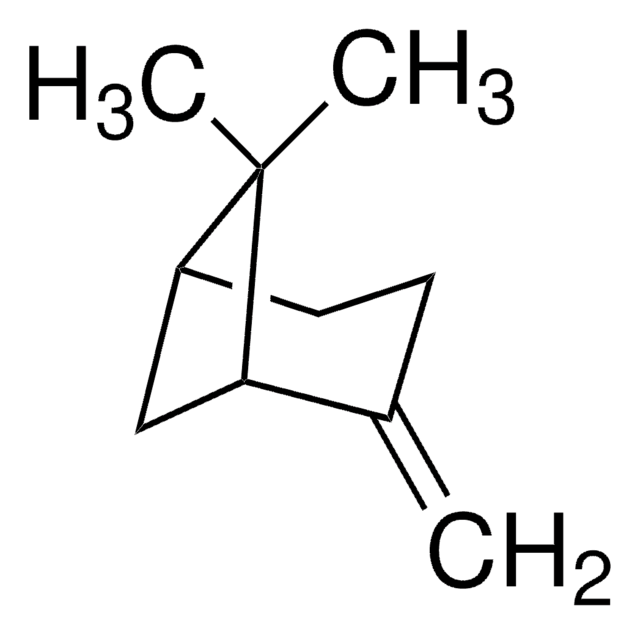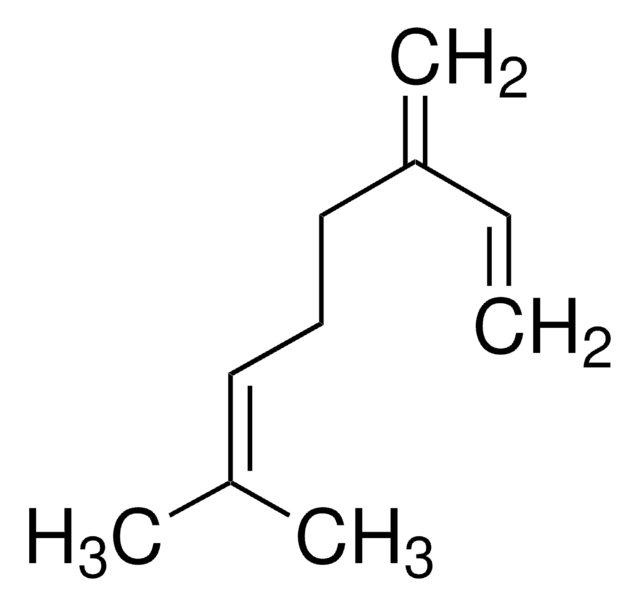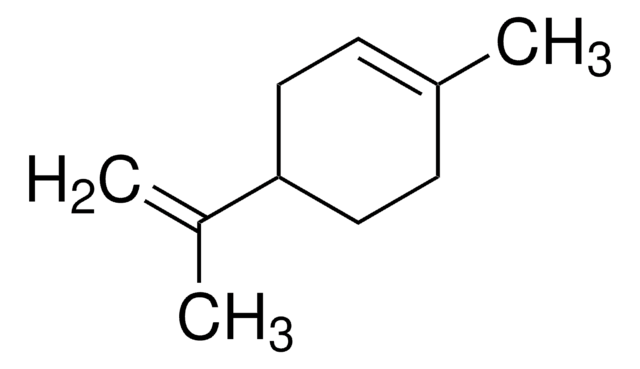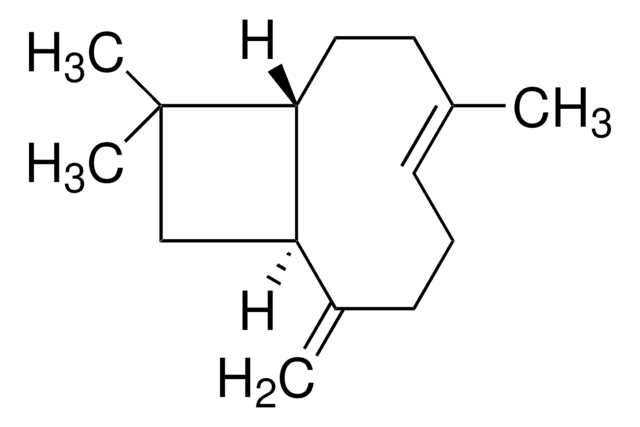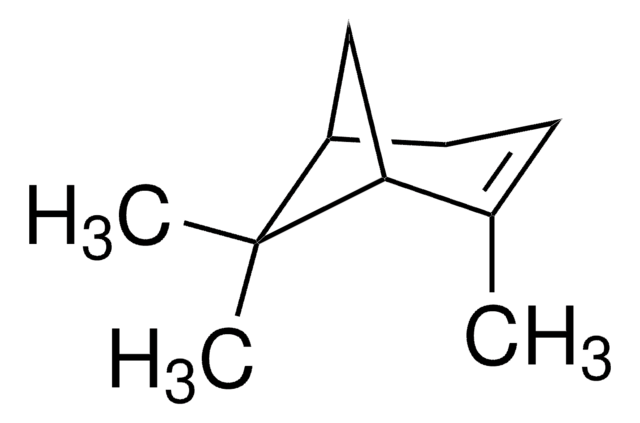W504505
(S)-(−)-Limonene
≥95%, FG
Synonym(s):
(−)-p-Mentha-1,8-diene, (−)-Carvene, (S)-4-Isopropenyl-1-methyl cyclohexene
About This Item
biological source
synthetic
Quality Level
grade
FG
Kosher
reg. compliance
EU Regulation 1334/2008 & 178/2002
FDA 21 CFR 182.60
vapor density
4.7 (vs air)
vapor pressure
<3 mmHg ( 14.4 °C)
1 mmHg ( 20 °C)
Assay
≥95%
optical activity
[α]20/D −90 to -61°, neat (angular)
expl. lim.
6.1 %
refractive index
n20/D 1.471 (lit.)
bp
175-177 °C (lit.)
density
0.844 g/mL at 25 °C (lit.)
application(s)
flavors and fragrances
Documentation
see Safety & Documentation for available documents
food allergen
no known allergens
Organoleptic
camphoraceous; herbaceous; pine
SMILES string
CC(=C)[C@H]1CCC(C)=CC1
InChI
1S/C10H16/c1-8(2)10-6-4-9(3)5-7-10/h4,10H,1,5-7H2,2-3H3/t10-/m1/s1
InChI key
XMGQYMWWDOXHJM-SNVBAGLBSA-N
Looking for similar products? Visit Product Comparison Guide
General description
Application
- Efficient production of (S)-limonene and geraniol in Saccharomyces cerevisiae through the utilization of an Erg20 mutant with enhanced GPP accumulation capability.: This study highlights a metabolic engineering approach to enhance the production of (S)-limonene and geraniol in yeast, offering potential for scalable biosynthesis of these valuable compounds (Bernard et al., 2024).
- The behavioral sensitivity of mice to acyclic, monocyclic, and bicyclic monoterpenes.: This research investigates the effects of various terpenes including (S)-limonene on mice behavior, providing insights into potential therapeutic applications (Williams et al., 2024).
Signal Word
Danger
Hazard Statements
Precautionary Statements
Hazard Classifications
Aquatic Acute 1 - Aquatic Chronic 1 - Asp. Tox. 1 - Flam. Liq. 3 - Skin Irrit. 2 - Skin Sens. 1B
Storage Class Code
3 - Flammable liquids
WGK
WGK 2
Flash Point(F)
123.8 °F - closed cup
Flash Point(C)
51 °C - closed cup
Personal Protective Equipment
Certificates of Analysis (COA)
Search for Certificates of Analysis (COA) by entering the products Lot/Batch Number. Lot and Batch Numbers can be found on a product’s label following the words ‘Lot’ or ‘Batch’.
Already Own This Product?
Find documentation for the products that you have recently purchased in the Document Library.
Customers Also Viewed
Chromatograms
suitable for GCOur team of scientists has experience in all areas of research including Life Science, Material Science, Chemical Synthesis, Chromatography, Analytical and many others.
Contact Technical Service



